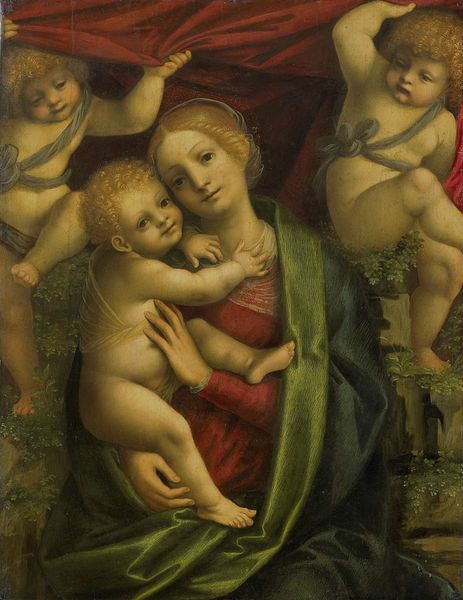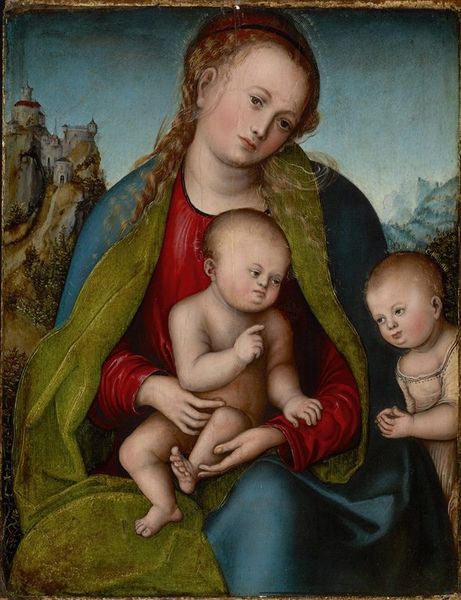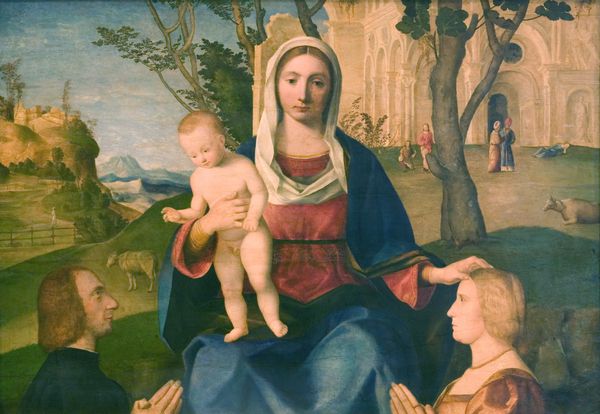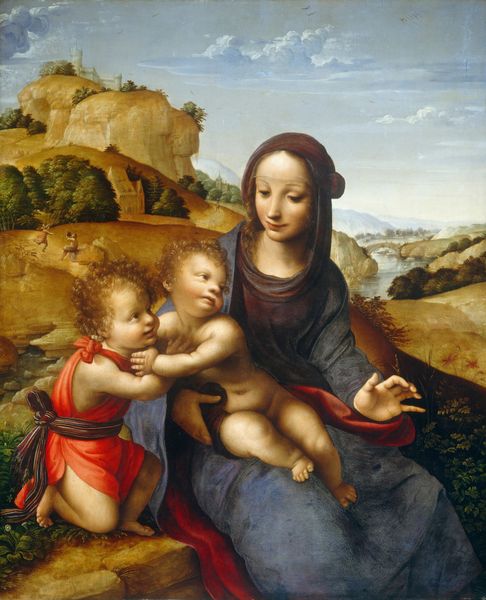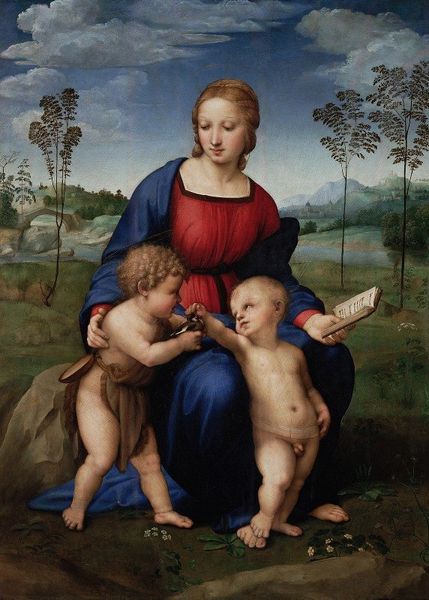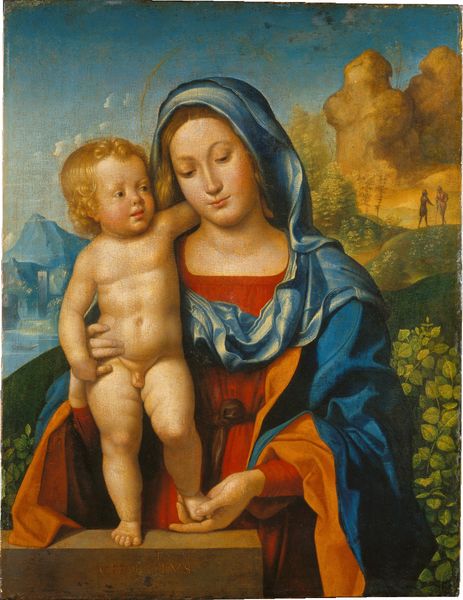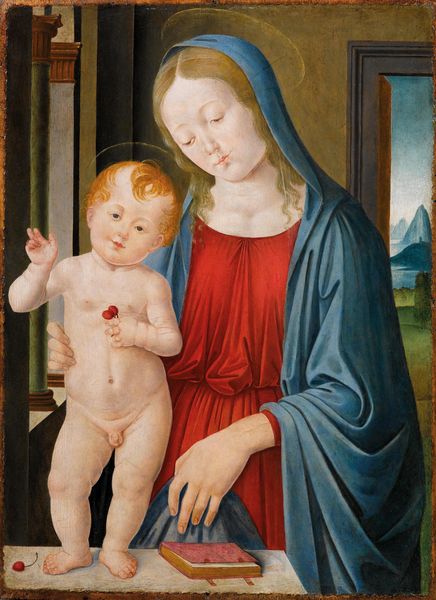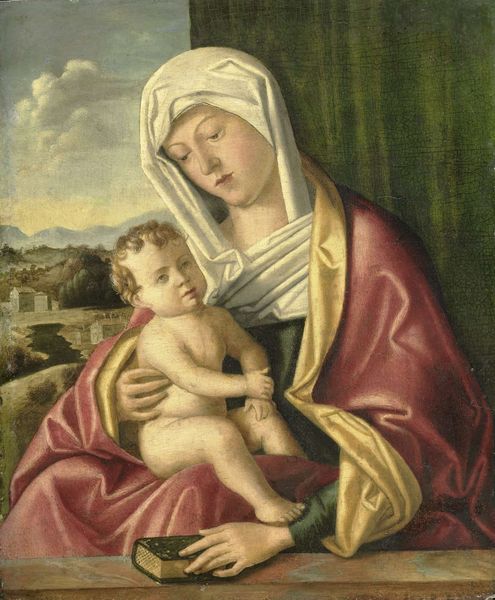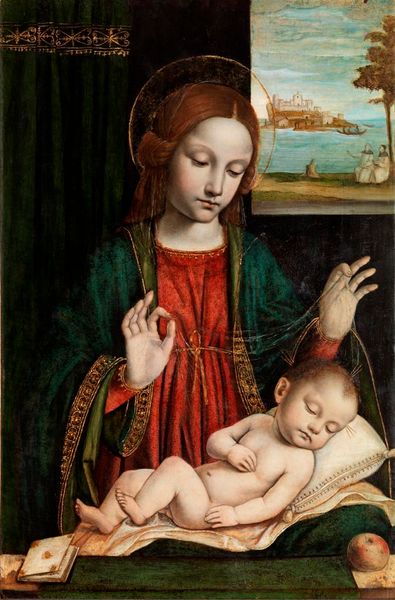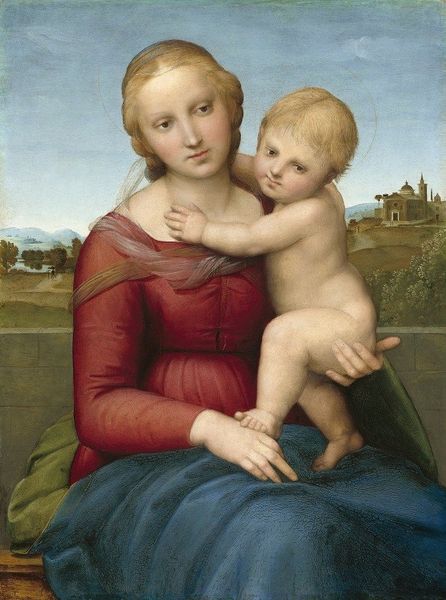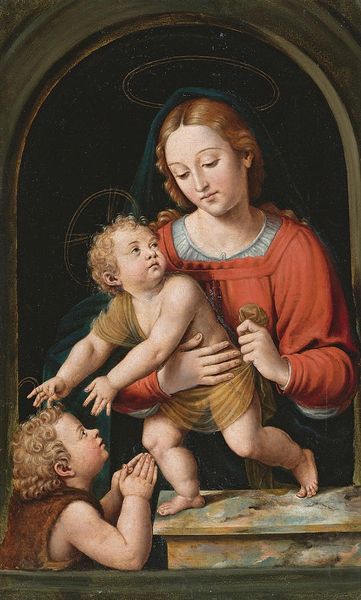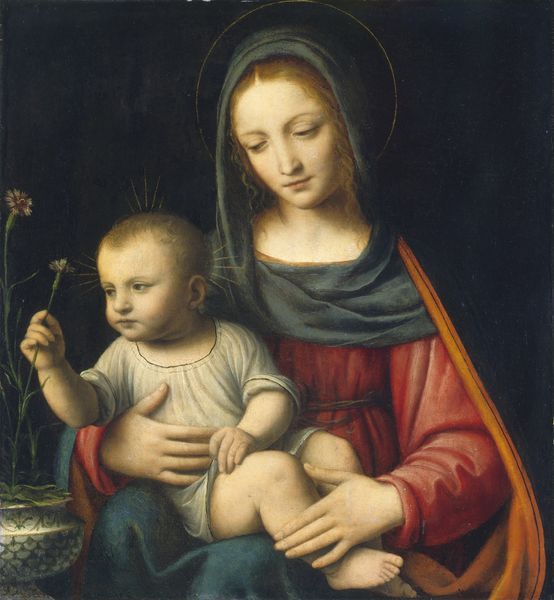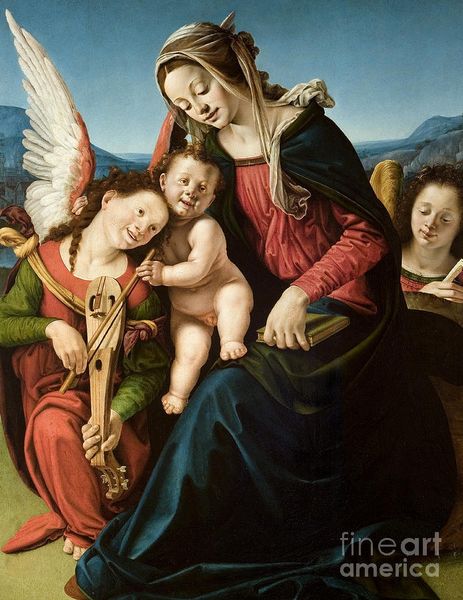
painting, oil-paint
#
portrait
#
high-renaissance
#
allegory
#
painting
#
oil-paint
#
figuration
#
oil painting
#
history-painting
#
italian-renaissance
Copyright: Public domain
Correggio painted this Madonna and Child in Italy, sometime in the early 16th century. Here, he presents us with a scene of intimate tenderness. But we should ask, what was the public role of such imagery? In Correggio's time, religious paintings weren't just personal expressions. They reinforced the power and authority of the Catholic Church. This image creates meaning through visual codes, such as the halos and the serene expressions of Mary and the children. It also references earlier religious art, while adapting the High Renaissance style of the time. By studying the history of religious institutions, we can understand how art was used to shape cultural values and beliefs. Historians use various resources – from religious texts to patronage records – to understand the context in which such art was made. Ultimately, this reminds us that art's meaning is always linked to its social and institutional context.
Comments
No comments
Be the first to comment and join the conversation on the ultimate creative platform.
